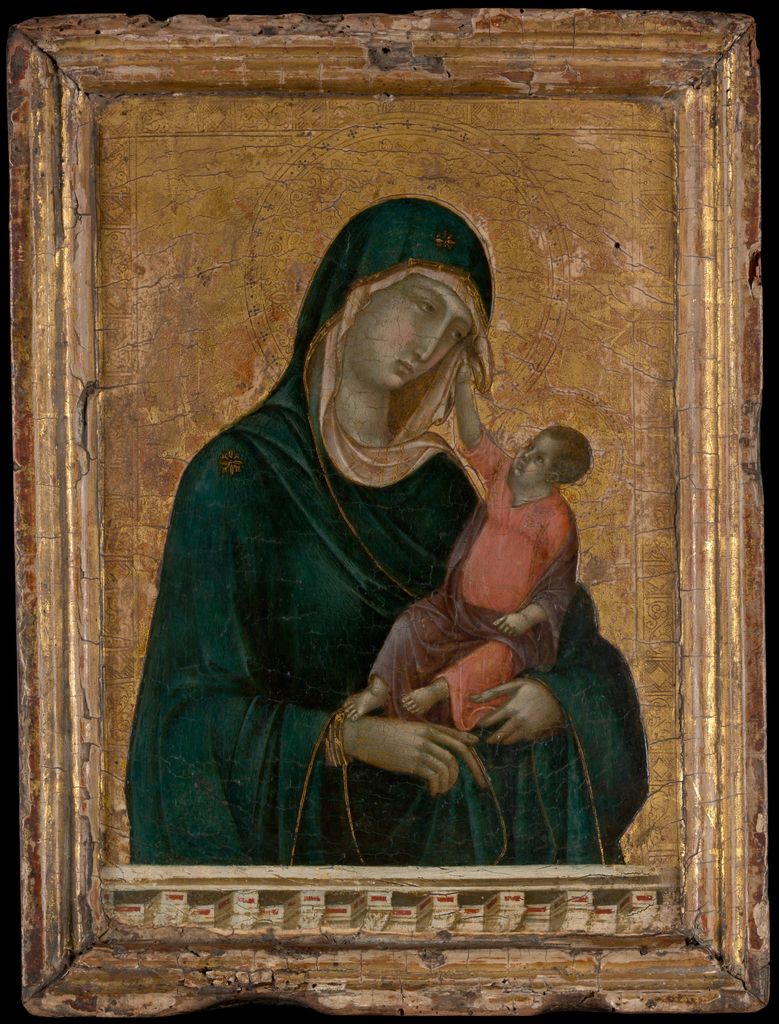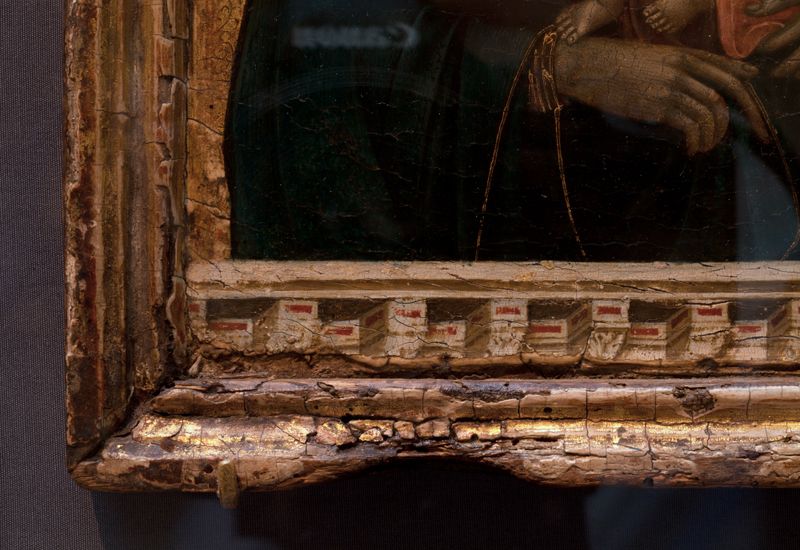Imagine a painting so precious, so revered, that it once graced the private chapel of a Russian count, later captivated a secretive Belgian collector, and now resides in one of the world’s most prestigious museums. This isn’t just any artwork; it’s a whisper from the 14th century, a tender portrayal of motherhood and divinity brushed with gold and imbued with centuries of history.
This is the story of Duccio di Buoninsegna’s “Madonna and Child,” a masterpiece that’s as captivating for its artistic brilliance as it is for its intriguing past, and a piece that even holds a surprising connection to the world of precious metals. As Dr. Steven Zucker observes, this rare Duccio panel, housed in London’s National Gallery, showcases the artist’s mastery, noting the “delicacy” of Mary’s veil and the “intimacy” of the Christ child’s adoring gaze. This intimacy, as Dr. Beth Harris points out, is revolutionary, foreshadowing the Renaissance while remaining firmly rooted in medieval tradition.
Duccio’s Masterpiece: A Blend of Tradition and Innovation
Duccio di Buoninsegna, a leading figure of the Sienese School, was a pioneer in bridging the gap between the traditional Byzantine style and the emerging Renaissance. His work is characterized by its elegant lines, rich colors, and the innovative use of gold leaf. In the “Madonna and Child,” the delicate details of the Virgin’s veil, which the Christ child playfully grasps, and the intricate patterns on the gold ground showcase Duccio’s mastery of his craft.
This “soft arc,” as described by Dr. Zucker, between mother and child, creates a visual and emotional bridge, drawing the viewer into their tender interaction. The rhythmic folds of fabric, the playful lines and curves of the garments, all speak to Duccio’s sensitivity to the decorative, a hallmark of the Sienese style.
Intimate Devotion: A Portable Altarpiece
The painting itself is quite small, measuring just 11 x 8 1/4 inches. This intimate scale suggests that it was likely intended for private devotion, a portable altarpiece for personal prayer. The bottom edge of the original frame bears the marks of candle burns, further evidence of its use in personal worship. As Dr. Harris suggests, such a piece would have been a valuable aid in prayer, fostering a sense of physical presence and emotional connection with the holy figures.
Humanizing the Divine: Emotional Depth and Artistic Innovation
The painting depicts the Madonna and Child in a tender embrace. The Christ Child gently pushes aside his mother’s veil, while her sorrowful expression hints at her foreknowledge of his crucifixion. This emotional depth and humanization of religious figures were hallmarks of Duccio’s style and would have a profound impact on subsequent generations of artists.
The inclusion of saints like Aurea and Dominic, as noted by Dr. Zucker, further enriches the piece, creating a sense of community and intercession within the divine narrative. These figures, with their direct gaze, seem to step out of the picture plane, inviting the viewer to participate in the sacred scene.
A Journey Through Time: Provenance and Historical Significance
The “Madonna and Child” has a fascinating history of ownership. Its earliest known owner was the Russian Count Gregori Stroganoff, who reportedly discovered it in a dealer’s shop. It later became part of the collection of Adolphe Stoclet, a Belgian industrialist and art collector.
In 2004, the Metropolitan Museum of Art acquired the painting, making it one of the most prized possessions in their collection. Despite its fame, the painting has been the subject of some controversy. Some scholars have questioned its authenticity, suggesting that it may be a later forgery. However, extensive technical analysis conducted by the Met has confirmed its attribution to Duccio and its dating to around 1300.
The Allure of Gold: Symbolism and Value
The use of gold in the “Madonna and Child” background and halo elements is not merely decorative; it holds symbolic significance. Gold, with its enduring brilliance, has long been associated with divinity and eternity. In medieval art, it was often used to depict halos, heavenly realms, and other sacred elements. As Dr. Zucker explains, the gold fields represent the “divine light of heaven,” a visual manifestation of the sacred space inhabited by the Madonna and Child.
Yet this material value pales in comparison to the painting’s artistic significance, demonstrating how precious metals have long served purposes beyond monetary worth, creating a bridge between earthly materials and spiritual expression.
A Timeless Treasure: The Enduring Legacy of the Madonna and Child
Duccio’s “Madonna and Child” is a testament to the enduring power of art. It is a beautiful and moving work that continues to inspire and captivate viewers centuries after its creation. Its rich history, artistic innovations, and symbolic use of gold make it a true treasure of the art world.
So, the next time you admire the gleam of gold in your bullion or the intricate details of a historical coin, remember Duccio’s “Madonna and Child.” It’s a reminder that gold, beyond its monetary value, has long been intertwined with art, spirituality, and the enduring human desire to create and cherish beauty. This small panel, rich in history and shimmering with gold, offers a powerful connection to the past, reminding us that some treasures are truly priceless.
Note: All modern valuations are calculated using current spot prices of $2,900/oz for gold and $31.20/oz for silver. Historical weights have been converted to troy ounces.
























